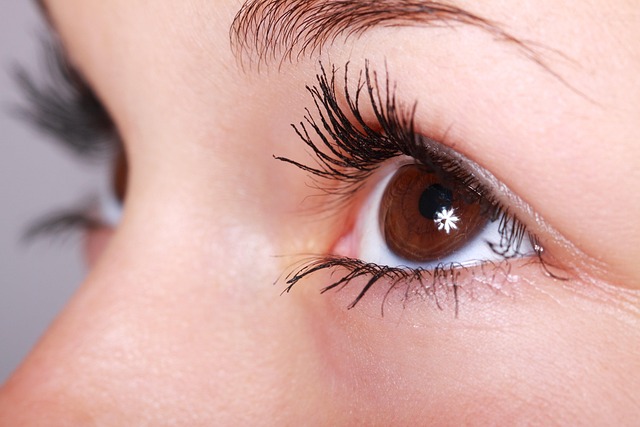Skin tags on the face, caused by various factors, can be removed in Glasgow through surgical or non-surgical methods. Surgical removal offers permanent solutions but higher risks of scarring; non-surgical techniques like topical creams, cryotherapy, or lancing are quicker and cause less downtime. Cryotherapy with liquid nitrogen, surgical excision, and laser treatments each have benefits and drawbacks depending on tag characteristics. Proper aftercare and preventive measures, including cleaning, moisturizing, sun protection, hydration, and diet, ensure successful outcomes and reduce future skin tag formation.
Looking to remove skin tags from your face in Glasgow? This guide provides a comprehensive overview of effective removal techniques, focusing on Glasgow tag removal options. We explore causes and types of facial skin tags, compare surgical vs non-surgical methods, weigh pros and cons, and offer aftercare tips for optimal results. Whether you prefer a professional procedure or at-home treatment, this article has you covered.
- Understanding Skin Tags on the Face: Causes and Types
- Glasgow Tag Removal Options: Surgical vs Non-Surgical Methods
- The Pros and Cons of Different Removal Techniques
- Aftercare and Prevention Tips for Effective Results
Understanding Skin Tags on the Face: Causes and Types
Skin tags on the face, also known as acrochordons, are small, soft skin growths that can appear as a result of various factors. They are generally harmless but may cause discomfort or self-consciousness for some individuals. Understanding their causes and types is an essential step in considering Glasgow Tag Removal options.
There are several potential triggers for facial skin tags, including genetics, hormonal changes, obesity, frequent friction or irritation, and certain skin conditions like eczema or diabetes. They can vary in size, from tiny, almost unnoticeable bumps to larger growths that hang from the skin. Typically, they don’t cause any pain but might itch or become irritated by clothing or facial expressions. Identifying the specific type of skin tag is crucial when deciding on removal methods, as different techniques may be more suitable for certain varieties.
Glasgow Tag Removal Options: Surgical vs Non-Surgical Methods
In Glasgow, there are two primary methods for skin tag removal: surgical and non-surgical. Surgical removal involves a quick in-office procedure where a doctor uses a scalpel or laser to cut off the skin tag. This method is effective but carries risks of scarring and requires a longer recovery time. On the other hand, non-surgical removal options are less invasive, often using topical creams, cryotherapy (freezing), or lancing to remove tags. These methods are generally quicker to perform and have less downtime, making them popular choices for those seeking Glasgow tag removal without major surgery.
When considering skin tag removal in Glasgow, it’s essential to weigh the benefits and risks of each approach. Surgical removal offers a definitive solution but may leave visible scars, while non-surgical methods provide convenience and minimal side effects. Many people opt for non-surgical treatments due to their simplicity and effectiveness, ensuring they can quickly return to their daily routines without significant disruptions.
The Pros and Cons of Different Removal Techniques
When considering removing skin tags from the face, it’s crucial to understand the various techniques and their implications. One popular method is using liquid nitrogen, a procedure known as cryotherapy. This non-surgical approach is generally quick, effective, and well-tolerated by patients. The main advantage lies in its ability to freeze and destroy the skin tag without pain or significant downtime. However, it may not be suitable for all types of tags, and there’s always a slight risk of scarring or pigment changes.
Another common method is surgical excision, which involves cutting out the skin tag with a scalpel. This technique offers precise removal but comes with potential risks such as bleeding, infection, and scarring. In some cases, especially for larger tags, this may be the most effective option. Alternatively, laser treatments have gained popularity in Glasgow Tag Removal services, targeting specific wavelengths to destroy the skin tag. While it’s a relatively non-invasive procedure, multiple sessions are often required, and it can be more expensive than other methods. Each technique has its pros and cons, so choosing the right one depends on factors like tag size, location, and individual preferences for pain tolerance and recovery time.
Aftercare and Prevention Tips for Effective Results
After removing skin tags from the face, proper aftercare is crucial for achieving and maintaining effective results in Glasgow Tag Removal procedures. It’s important to keep the treated area clean and moisturized. Use a mild cleanser and avoid harsh scrubs or exfoliants that could irritate the sensitive skin. Gently pat the area dry with a clean towel, and apply a thin layer of hypoallergenic moisturizing cream to promote healing and prevent dryness.
To prevent future skin tags from forming, maintain good hygiene practices by regularly cleansing your face. Additionally, protect your skin from sun exposure as UV rays can contribute to skin tag development. Consider using broad-spectrum sunscreen with at least SPF 30 daily, even during cloudy weather. Stay hydrated by drinking plenty of water, and maintain a balanced diet rich in vitamins and minerals to support overall skin health.
Removing skin tags from the face is a personal choice, but with various Glasgow tag removal options available, there’s a suitable approach for everyone. Whether you opt for surgical or non-surgical methods, understanding the pros and cons of each technique will empower your decision. By following effective aftercare and prevention tips, you can achieve desirable results and bid farewell to unsightly skin tags. Remember, professional guidance is essential for safe and successful Glasgow tag removal.
